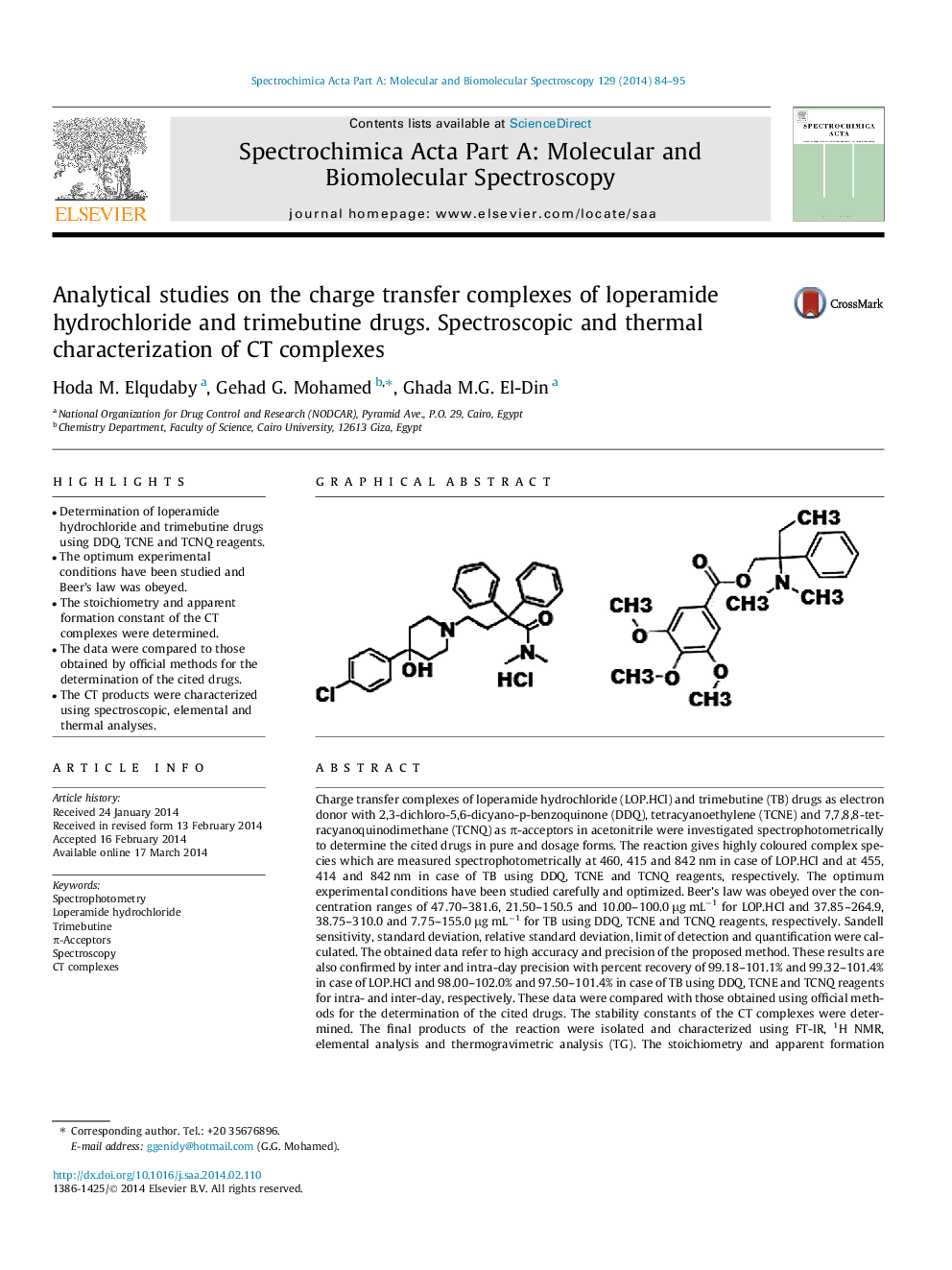| Article ID | Journal | Published Year | Pages | File Type |
|---|---|---|---|---|
| 1229847 | Spectrochimica Acta Part A: Molecular and Biomolecular Spectroscopy | 2014 | 12 Pages |
•Determination of loperamide hydrochloride and trimebutine drugs using DDQ, TCNE and TCNQ reagents.•The optimum experimental conditions have been studied and Beer’s law was obeyed.•The stoichiometry and apparent formation constant of the CT complexes were determined.•The data were compared to those obtained by official methods for the determination of the cited drugs.•The CT products were characterized using spectroscopic, elemental and thermal analyses.
Charge transfer complexes of loperamide hydrochloride (LOP.HCl) and trimebutine (TB) drugs as electron donor with 2,3-dichloro-5,6-dicyano-p-benzoquinone (DDQ), tetracyanoethylene (TCNE) and 7,7,8,8-tetracyanoquinodimethane (TCNQ) as π-acceptors in acetonitrile were investigated spectrophotometrically to determine the cited drugs in pure and dosage forms. The reaction gives highly coloured complex species which are measured spectrophotometrically at 460, 415 and 842 nm in case of LOP.HCl and at 455, 414 and 842 nm in case of TB using DDQ, TCNE and TCNQ reagents, respectively. The optimum experimental conditions have been studied carefully and optimized. Beer’s law was obeyed over the concentration ranges of 47.70–381.6, 21.50–150.5 and 10.00–100.0 μg mL−1 for LOP.HCl and 37.85–264.9, 38.75–310.0 and 7.75–155.0 μg mL−1 for TB using DDQ, TCNE and TCNQ reagents, respectively. Sandell sensitivity, standard deviation, relative standard deviation, limit of detection and quantification were calculated. The obtained data refer to high accuracy and precision of the proposed method. These results are also confirmed by inter and intra-day precision with percent recovery of 99.18–101.1% and 99.32–101.4% in case of LOP.HCl and 98.00–102.0% and 97.50–101.4% in case of TB using DDQ, TCNE and TCNQ reagents for intra- and inter-day, respectively. These data were compared with those obtained using official methods for the determination of the cited drugs. The stability constants of the CT complexes were determined. The final products of the reaction were isolated and characterized using FT-IR, 1H NMR, elemental analysis and thermogravimetric analysis (TG). The stoichiometry and apparent formation constant of the complexes formed were determined by applying the conventional spectrophotometric molar ratio method.
Graphical abstractFigure optionsDownload full-size imageDownload as PowerPoint slide
